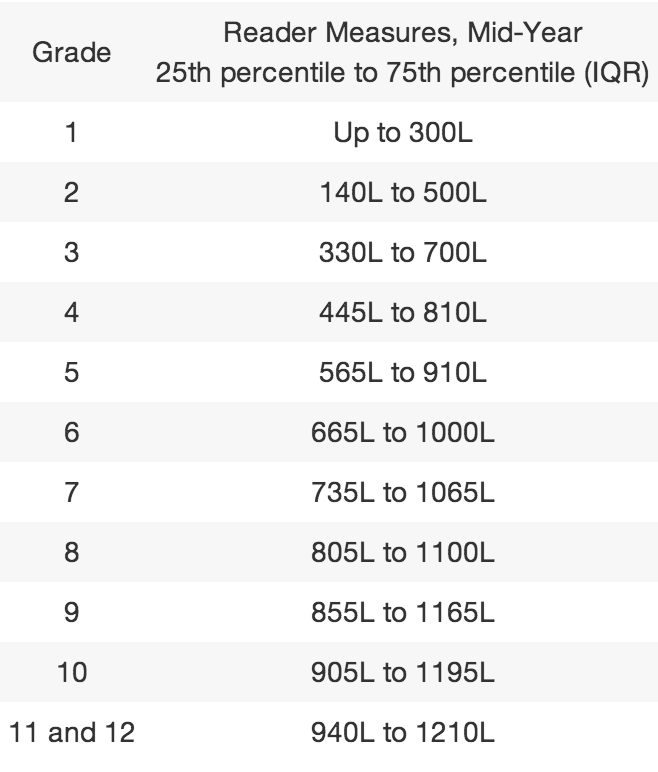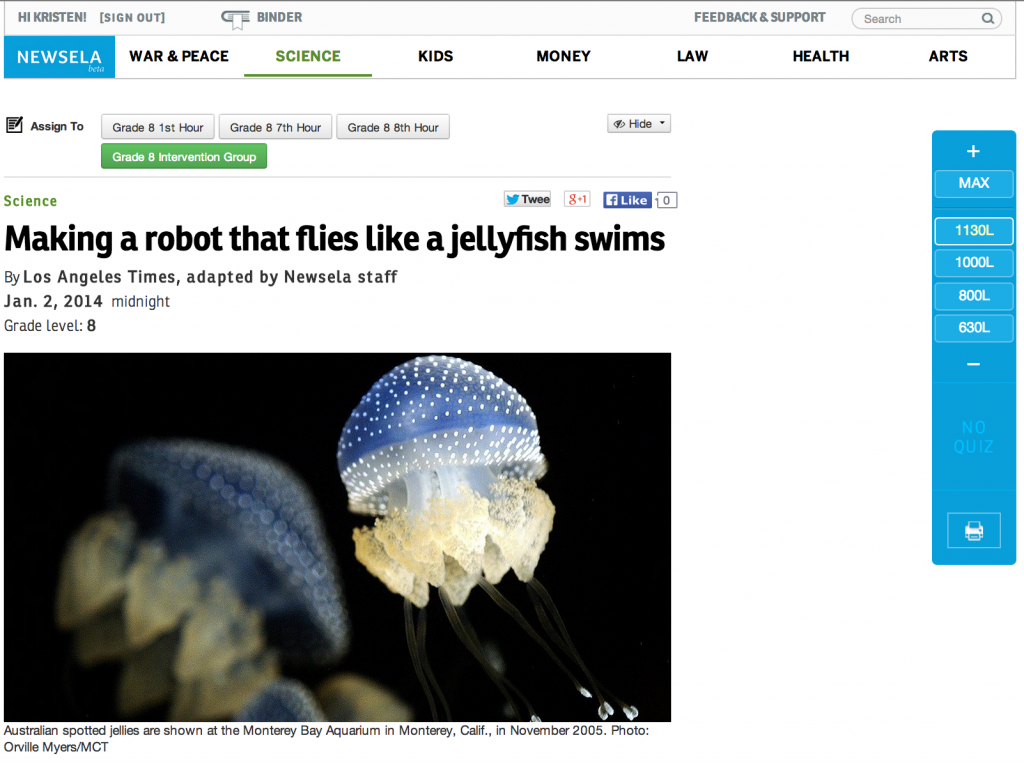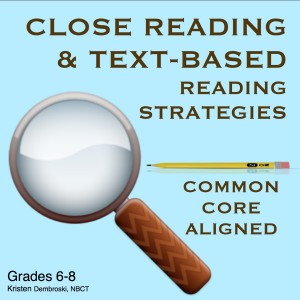Jan
2014
Struggling Reader Interventions
As semester 1 comes to a close, I am gearing up for a new intervention group. I will get a group of about 7 students who are below grade level in reading (based on the MAP Measures of Academic Progress score). I will work with them twice a week for a half hour. As a small group, we will focus on improving our reading strategies and skills, as well as confidence with reading (a key component, in my opinion).
We will begin by having a frank discussion of why we are meeting as an intervention group. I want to empower my students, not make them feel like they are being ‘punished’ for an extra hour per week. I let them know that they have many strengths and skills, but sometimes we may need to brush up on one skill in particular or practice a skill until it become easier or more automatic. I make them feel special like we are in a top secret testing research group trying to figure out all of the tricks of the standardized tests (we discuss test-taking language and strategies as well). It’s important to me that they feel like part of a team when we meet, and that everyone enjoys working together. Let’s just say there is a lot of candy and bribery involved in the beginning.
An analogy I like to use with my struggling readers is that becoming a strong reader is sometimes like baking cookies – you can have all the best ingredients, but if you are missing one tiny item (like salt), the cookies just won’t work. It’s my job to help them realize that they have all those wonderful ingredients ready to go, and I help them find the missing ‘salt’ so that everything comes together. We aren’t starting from scratch, we’re just identifying and filling a tiny gap here or there.
On our first day, I will introduce them to this awesome new website I came across called Newsela. Newsela is self-described as, “an innovative way for students to build reading comprehension with non-fiction that’s always relevant: daily news.” Essentially, it is a news website that allows you to change the reading level of an article at the click of a button. I can upload my class roster and assign readings to my students, complete with a comprehension quiz at the end! And since we have iPads, the students can even annotate or take notes as they read the articles. If you peruse the website, you will see that they are all very high-interest stories. We are beginning with “Making a robot that flies like a jellyfish swims.”
The Lexile levels of the articles range from 630 to 1130. Below is a Lexile to grade level conversion chart reported on the Lexile website.
 I can assign any student a different Lexile level based on his/her individual needs. I am going to start all of my students at the 630 level as we build rapport, confidence, and momentum. My goal is to have them reading independently at the 800 level before they are dismissed from interventions.
I can assign any student a different Lexile level based on his/her individual needs. I am going to start all of my students at the 630 level as we build rapport, confidence, and momentum. My goal is to have them reading independently at the 800 level before they are dismissed from interventions.
So what will we be DOING with the articles? I plan to follow a lot of the close-reading strategies and text-based reading strategies as outlined in the following downloadable product on Teachers Pay Teachers:
First, we will activate any prior knowledge students might have about jellyfish and/or robots, and we try to predict what they might have in common. Next, I will pre-teach only one important vocabulary word: imitate. We will scan the article and notice that it is divided into sections. We will read it out loud together as a group, and then decide what the main idea or key idea of the entire article was.
The next part of the lesson combines text-based reading strategies and the SQ3R method. It involves 2 different highlighter colors, let’s say pink (color #1) and blue (color #2). First, I will have the students highlight in pink (color #1) any sentences that they believe supports our main idea of the paragraph – supporting details. If our main idea is, ‘scientists are trying to invent flying robots that imitate jellyfish,’ then we will highlight in color #1 any ideas that help to explain how and/or why scientists are planning to accomplish this.
Next, we will turn each of the subsection titles into a question. For example, instead of “Very Simple Creatures,” we might ask, “Why are jellyfish considered very simple creatures?” Students will use their second color to highlight any sentences or key details in that subsection that helps them answer the question. The key here is that they are always looking for evidence in the text – it’s not just pulled out of nowhere. This plan also helps students to visually chunk the text into smaller manageable parts – a strategy they can easy enact with all of their reading.
So that is our plan to tackle non-fiction for a few weeks. I will slowly increase the Lexile level to test the waters and see how students fair with less and less guided support from me. I want to see these skills of activating prior knowledge, chunking text, and looking for main ideas with supporting evidence FROM the text, to become automatic. I have high hopes for these students, and I can’t wait to report back with their progress!
![]()


Abena
November 3, 2015 at 6:09 pm (10 years ago)Hi Kristen,
Thanks so much for directing me to your blog from TpT on the question of intervention. Funnily enough, it is MAP scores of some of my students that prompted me to look into this so I know you know where I’m coming from.
I could arrange a lunch-time or after-school group to follow the small group model you describe here, but I want to make sure whatever I do counts. With that in mind, how did this approach go? Did you find their reading skills showed improvement or did you turn to other methods? I would really appreciate your frank and honest answer, as I know it’s a tricky question but I’m sure there’s a way to maximise our time.
Thanks again for your continued dialogue; it’s much appreciated.
Abena
kdembro
November 3, 2015 at 7:51 pm (10 years ago)Hi Abena,
Thanks so much for your comment/question. The first thing that I should clarify is that I hand selected this small group of students because they were only slightly behind grade level on the MAP, and I also administered the QRI-V reading inventory to determine their particular deficits. None of my students had conflating issues with reading fluency, so essentially I built a more or less homogenous group of students who only needed a slight boost in reading comprehension, particularly with nonfiction text. This approach did work for me for that reason. If you have students with other underlying issues, then you would need to identify and address those first. I have found that the QRI-V (a qualitative reading inventory that takes me about 30-45 minutes per student to administer, one-on-one) gives me a lot of information about each student and his/her reading strengths and weaknesses.
With that being said, using Newsela articles did really help my group of students quite a bit. They all made gains, however modest, with the next administration of the MAP. I will also be honest and say that I did not use the Newsela quizzes that come with each text – I found them to be discouragingly difficult and not on-par with what we were doing in the classroom. I wrote my own questions based on Close Reading and Text-Based Reading Questions. I would read the article ahead of time and come up with 4-6 key questions and 1-2 key vocabulary before our intervention meetings. I also required my students to read the article out loud, which I think helped them to slow down and really pay attention to what they were reading. We discussed as we went, which more closely modeled the internal dialogue that readers create as they read (metacognition). I am planning to do this approach again this year when I start up my intervention class again, however we will be meeting 4 times per week and we will also be using a new program called MobyMax (I am not familiar enough with it yet to tell you what it is all about, sorry!). Since I have more time, I will also be working on vocabulary and roots/affixes. Hope this helps! Happy to keep discussing and answering any more of your questions – fire away!